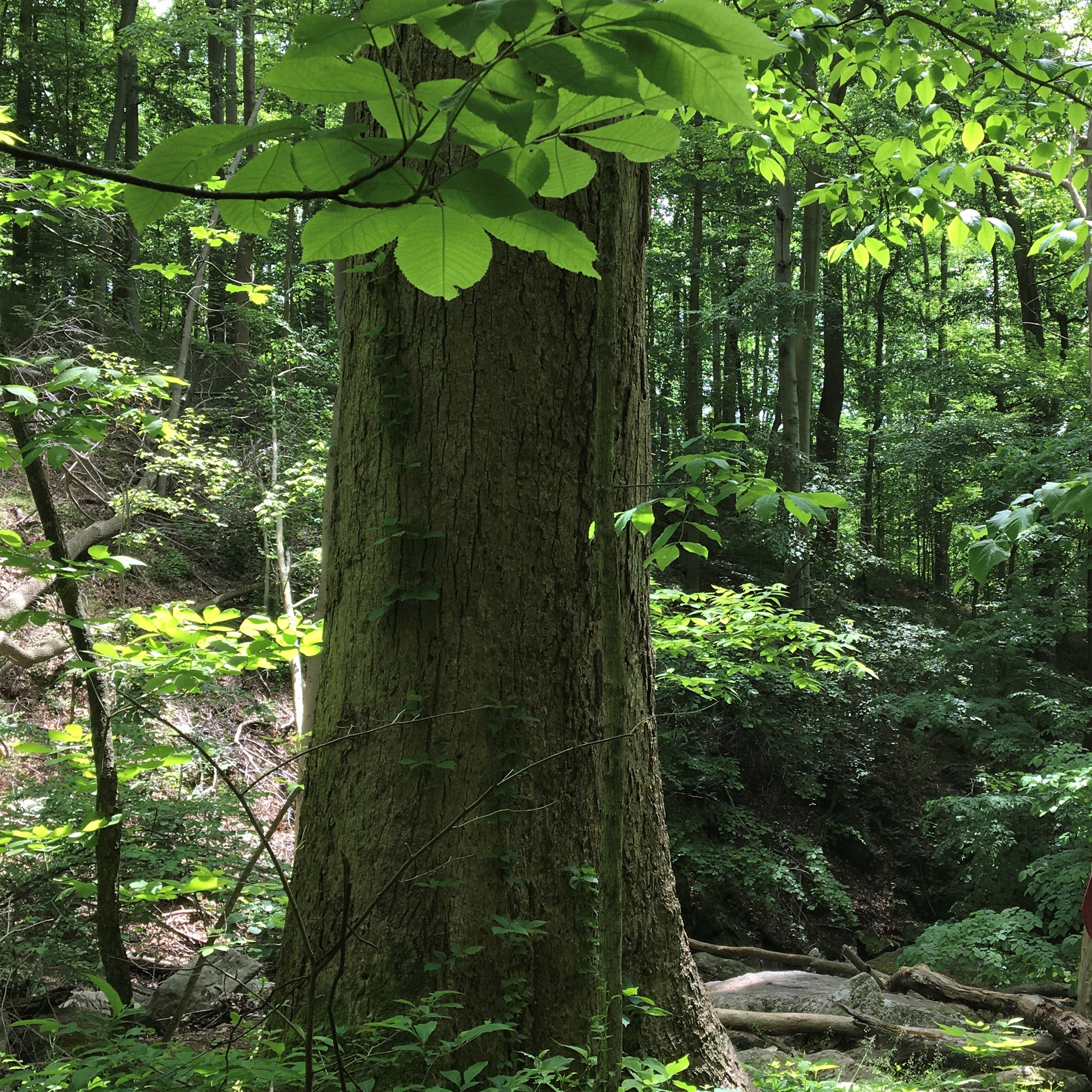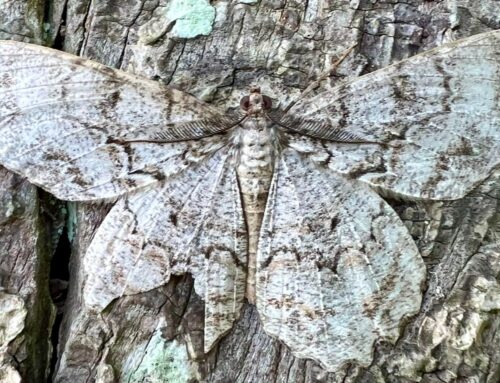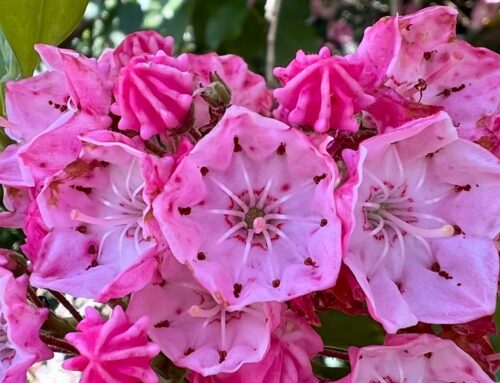Top Tyler Trees
Tyler Arboretum is all about trees so it’s difficult to choose favorites…but we did it! We asked gardener Bess Trout, as well as a few of Tyler’s volunteers, to pick their Top Tyler Trees. Enjoy these 10 extra special trees and discover why they have made the cut.
Common Name: American beech
Scientific Name: Fagus grandiflora
Location: By the Pond
Favorite of: Bess Trout, Gardener
These beeches and this spot at Tyler are one of my all-time favorites. The cool shade is always worth a visit when the summer heat kicks in, and their bark really stands out in the winter. In the fall when the leaves of the bottlebrush buckeye turn gold, it’s as though you lit a candle beneath the beech trees. I love these trees because they tell us something about the forest. American beeches are a late succession species – that means they take a long time to grow and are usually found where the land has been left alone. You know if you are looking at an American beech tree, you’re standing in a forest that’s been growing a long time. With their smooth gray bark and slender-pointed buds, they are pretty easy to identify.
Common Name: American chestnut
Scientific Name: Castanea dentata
Location: Chestnut Orchard, access across Painter Road on the Pink Hill Trail (pink blazes) and Minshall Trail
Favorite of: Bess Trout, Gardener, and Tyler’s American Chestnut Orchard volunteers
The story of the American chestnut is an iconic one. This classic American tree was once so plentiful that people wrote in letters that the hillsides looked snow-covered in June because of their white flowers. This tree fed wildlife and people alike until it vanished from the landscape due to chestnut blight. For a long time this beloved tree was believed to be all but extinct, but here at Tyler Arboretum we’re working with the American Chestnut Foundation to try to restore this important keystone species. Chestnut blight is a fungus that kills the American chestnut tree but doesn’t bother the Chinese chestnut. For over 70 years scientists and volunteers have been working to breed American chestnuts with just enough Chinese heritage to resist the blight. You can see the Chestnut Orchard while hiking on two of our Tyler trails. It might not look like much but it’s an incredible symbol of hope and resilience.
Common Name: Katsura tree
Scientific Name: Cercidiphyllum japonicum
Location: Scenic Loop, across from the Wister Rhododendron Garden
Favorite of: Horticulture staff
Everyone on the Horticulture staff at Tyler loves our trees. We each have our favorites, but we all agree that our katsura trees are something special. Native to Asia, katsuras do very well here and would make a great addition to any backyard. They have beautiful heart-shaped leaves that turn a rich gold in the fall. But what makes them really special is that when their leaves start to change color, they give off a smell exactly like cotton candy. It’s uncanny! When the weather turns cool and dry in late September, we all make sure to swing by our row of katsuras as we go about our work in the Arboretum, sniffing as we pass them. When the wind is right the smell is so strong you might even get hints of it in the Stopford Family Meadow Maze, or while walking through the Wister Rhododendron Garden. Make sure you come by this fall, on a clear, cool day when the sky is brilliant blue to see if you can smell them too. But don’t wait until the summer is over — from their purple-tinged new leaves in the spring, to their dappled shade in the summer and beautiful branching in the winter, these trees are worth a visit no matter the season.
Common Name: Tulip tree
Scientific Name: Liriodendron tulipifera
Location: Outside of fence on Painter Road, walkable from front entrance along fence
Favorite of: Bess Trout, Gardener
The tulip tree planted on Painter Road is one of the first remarkable trees you’ll see at Tyler Arboretum…but you might drive right past it! A State Champion tree with a height of nearly 140 feet, it is truly a giant in the landscape. Tulip trees get their name from their beautiful flower which looks a little like a tulip, but because these trees grow so straight and tall people don’t usually get to see them. Their straight, strong growth made tulip trees an important part American history. The Lenni Lenape used them to make dugout canoes and American colonists relied on them for ship masts. This tulip tree can be seen from the road even if you can’t stop by and visit Tyler. Just slow down as you drive past its massive trunk. Keep your eye out in May and June and maybe you’ll get to see some flowers.
Common Name: White oak
Scientific Name: Quercus alba
Location: In the hollow by the Tulip Tree House
Favorite of: Horticulture staff and squirrels
These white oaks are some of our favorite trees at Tyler. We don’t know the exact age of these venerable old oaks but based on the maps and planting data we have available, they may be even older than our Painter Era trees (1840-1860s). Not only are these particular oak trees are beloved by all the Horticulture staff at Tyler, but also by the many squirrels that call the Arboretum home. White oaks have less tannins than other oak species so their acorns are a bit sweeter. It’s hard work to find acorns from these trees because the critters who live at Tyler gobble them up so fast. Oak trees support more than just acorn-lovers though; oaks support over five hundred butterfly and moth species. That’s more than any other tree! These white oaks have worked hard for more than a century to keep the forests and wildlife here at Tyler healthy, and we’ve done our best to keep these trees happy and healthy as well. We even had Bartlett Tree Experts come in and bolt one of them together when it started to crack apart. We hope they’ll keep shading the hollow and providing food for the squirrels for a long time to come.
Common Name: Carolina silverbell
Scientific Name: Halesia carolina
Location: Native Woodland Walk’s south entrance and Tyler’s main entrance path
Favorite of: Heather G., volunteer
The Carolina silverbell near the south entrance of the Native Woodland Walk is a majestic tree with delicate features. You will find the silverbell there after a walk through Tyler’s enchanting magnolia and lilac collections. The silverbell is equally enchanting! It provides a tall, broad canopy over this far end of the collections and its delightful flowers dangle down in the spring like a blessing. I am amazed by its beauty and determined longevity every time I see it. This tree species is native to the southeastern US, and it is important to our pollinators. This Tyler senior silverbell has been pruned carefully over the years and is now reinforced with guy wires. You will find its younger relative right along the main Tyler entrance path, before you make a turn for the Barn. Here, you will be able to see more closely its delightful, drooping, delicate white flower bells in the spring. They are ringing, welcome to Tyler!
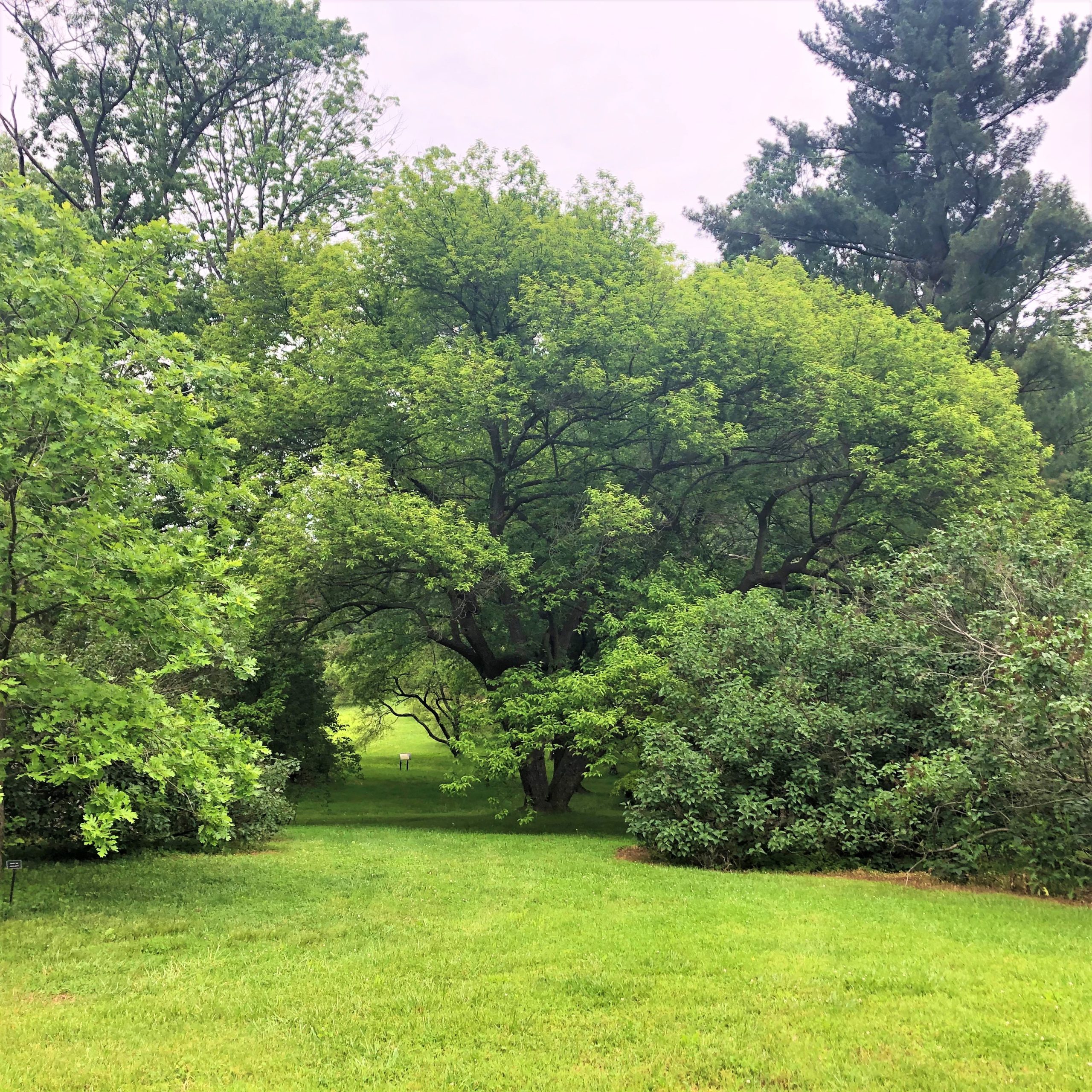
Common Name: Dove tree
Scientific Name: Davidia involucrata
Location: Behind Painter Library, heading down the slope
Favorite of: Karen H., volunteer
The first time I saw a dove tree was at Brooklyn Botanic Garden and I stopped dead in my tracks. It was fabulous in full bloom, but it looked like it was decked out for Halloween rather than springtime as the flowers looked like little ghosts hanging about the tree. Five years later I happened on the dove tree at Tyler and I did the very same thing. I’m amazed by the flowers that the tree produces — perfect white bracts that flutter easily in the breeze like silk handkerchiefs. It blooms every year around Plant Sale time.
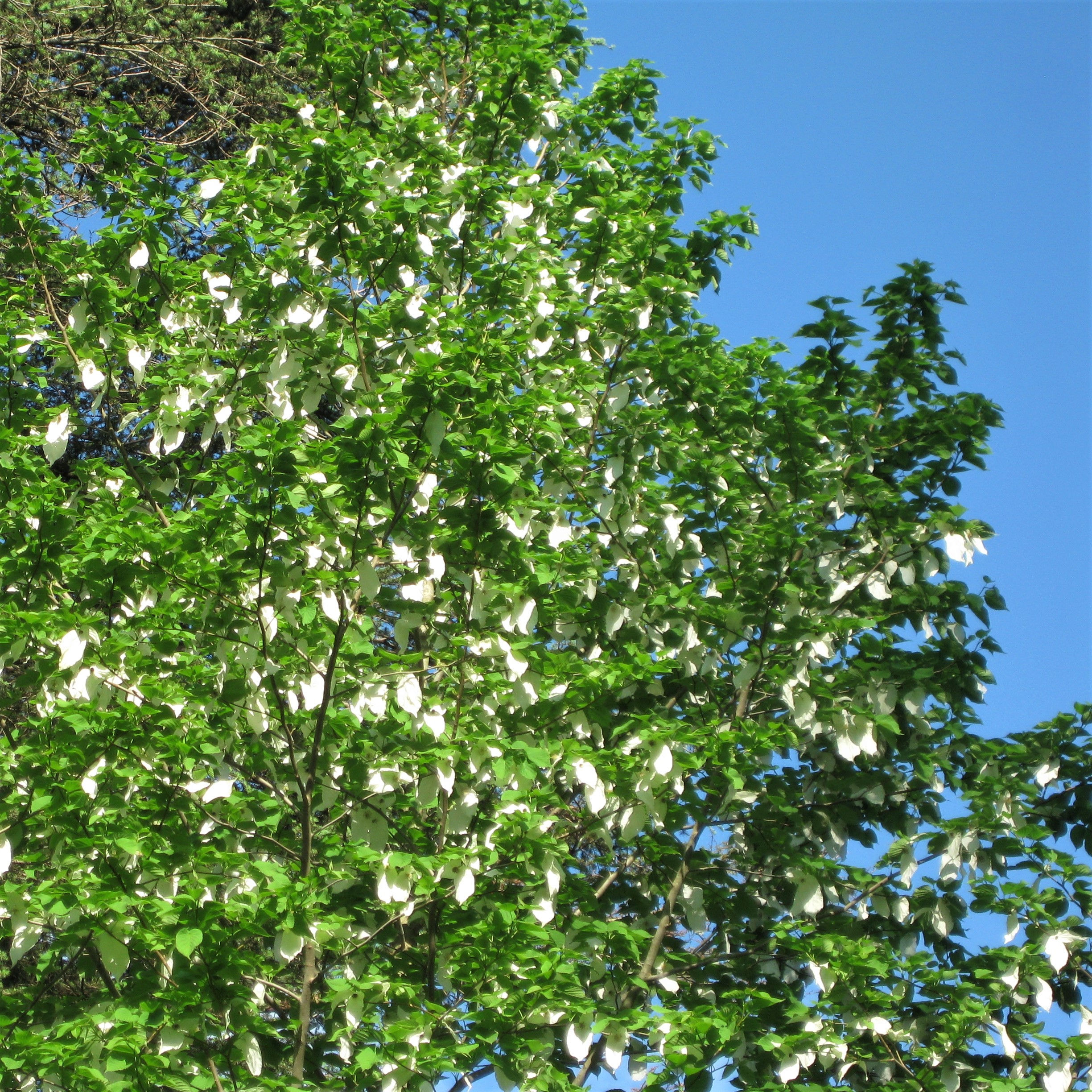
Common Name: Kobus magnolia
Scientific Name: Magnolia kobus
Location: Magnolia collection
Favorite of: Jessica P., volunteer
In 2017 this young magnolia struck my fancy. I have so many favorites at Tyler, but I keep a picture of this one. Growing out in the Magnolia Field, its youth and promise caught my eye. The white blossoms were uplifting and the delicate branches made me smile.
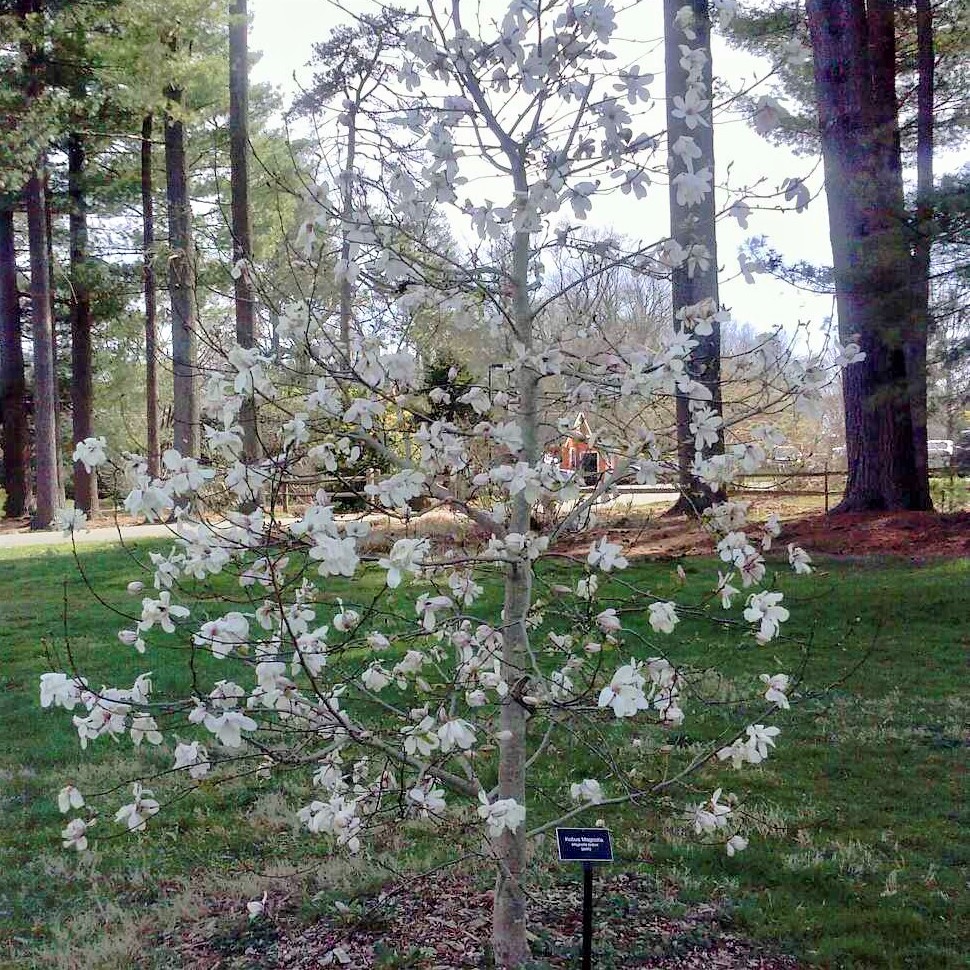
Common Name: Tulip tree
Scientific Name: Liriodendron tulipifera
Location: Wister Rhododendron Garden
Favorite of: Tony L., volunteer
My favorite tree at Tyler Arboretum? There’s a tulip tree up in the Wister Rhododendron Garden. There must be…because I have spent scores of Tuesday mornings weeding and pulling innumerable tulip tree seedlings that find their way into our meticulously weeded azaleas and rhododendrons. As many as I pull, come the next Tuesday, they’re back!
So why is this tulip tree so special? It’s not, but when I see those seedlings, I’m reminded of the rewarding hours spent with the Horticulture Crew in the Rhododendron Garden and talking about history and books with a really nice group of people pursuing a common interest. And the quiet! Even with the chipper roaring in the next field over, there is a cathedral-like quiet in the Rhododendron Garden. I don’t know much about trees or botany, but thanks to that tulip tree and its seedlings, I do know a very peaceful place to relax.
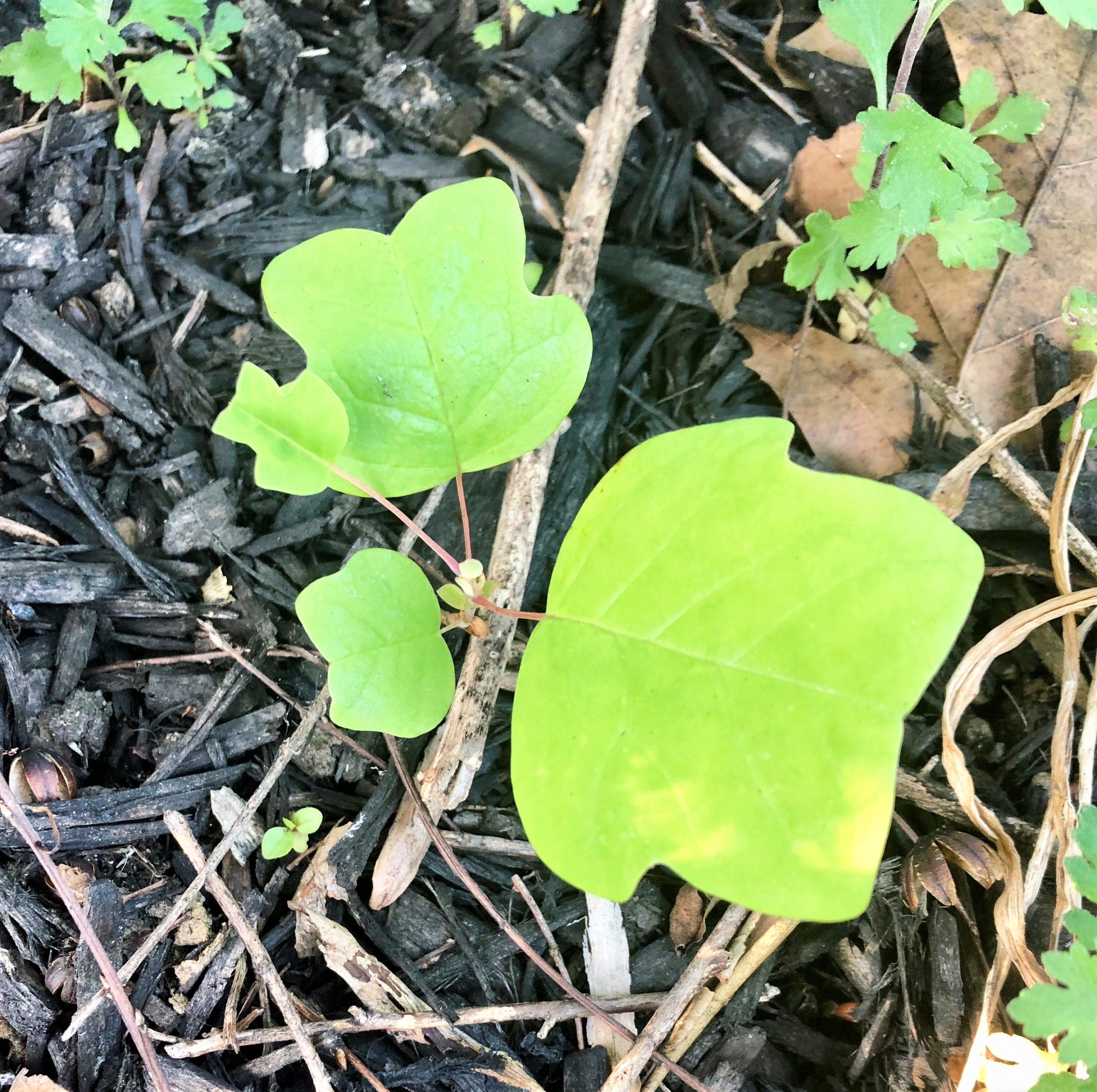
Common Name: Tulip tree
Scientific Name: Liriodendron tulipifera
Location: Near the convergence of the Rocky Run Trail (blue blazes), Painter Trail (red blazes), Minshall Trail (white blazes) and Dismal Run Trail (orange blazes).
Favorite of: Mike C., volunteer
Next to “Indian Rock” grows a large and very tall tulip tree. This tree rivals some of the largest trees in the Arboretum. In an article from 1929 by T. Chalkley Palmer and presented to the Delaware County Institute of Science, this tree is noted as already being large and casting its shade over the North Branch of Dismal Run (now called Rocky Run). I have wondered whether this tree, growing more slowly in a forested environment, could possibly be among the oldest of living things in the Arboretum. Did it witness the activities of the Lenni Lenape? And what might it think of the Tyler summer campers visiting the legendary stone, or the elderly gentlemen seated nearby cogitating on the magnificent forest and rare plants around? A Tyler treasure indeed.
